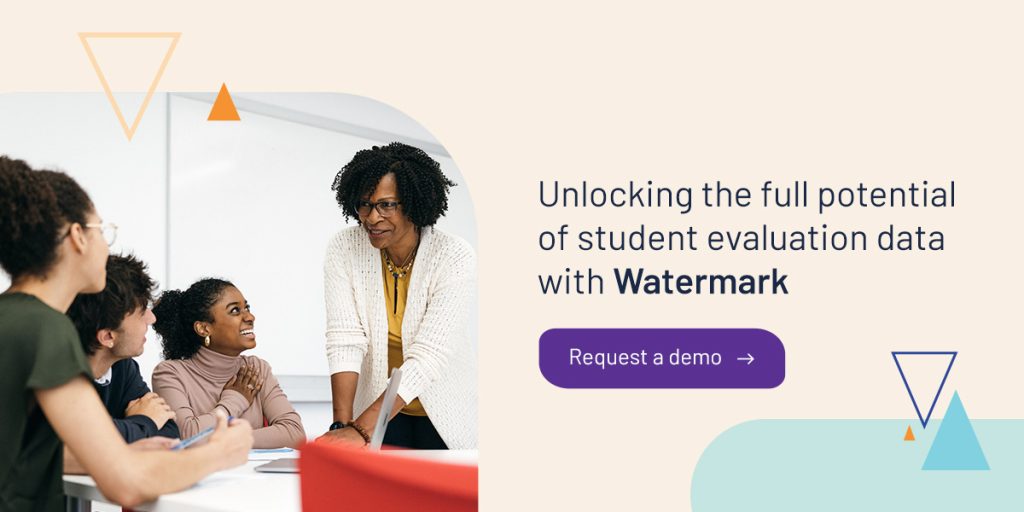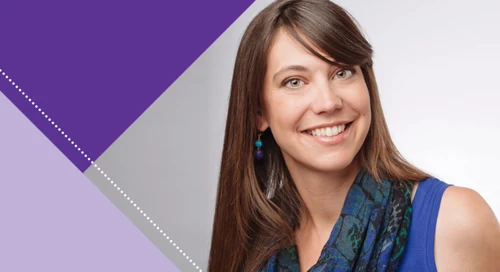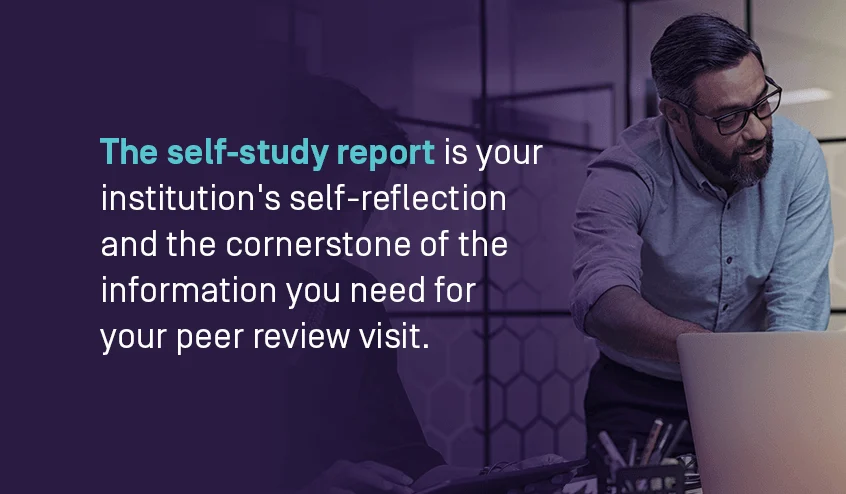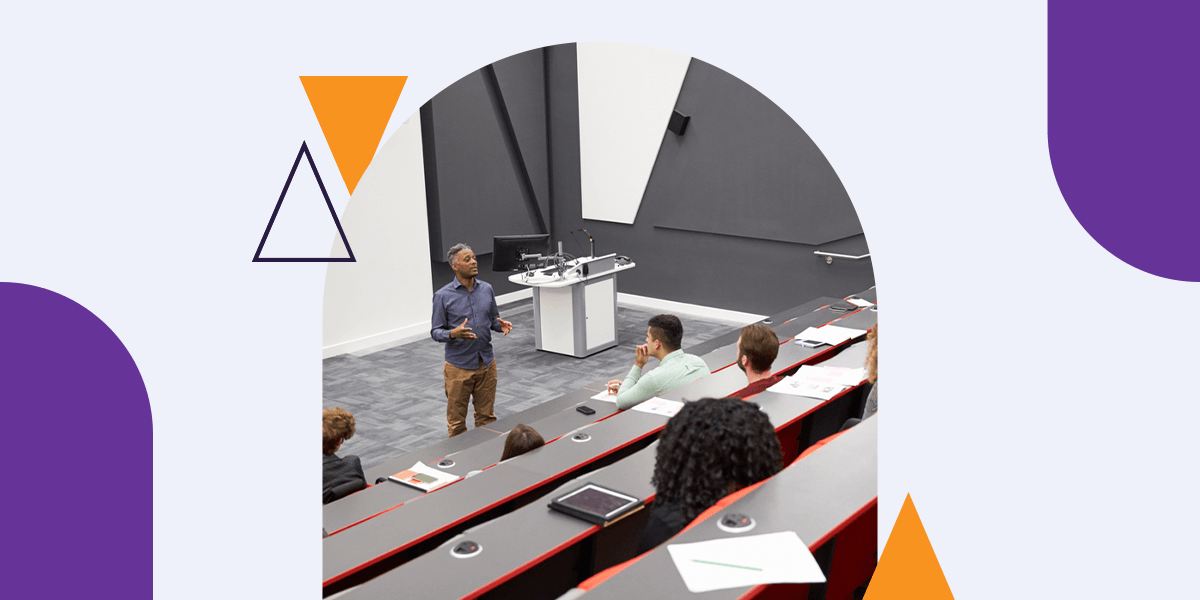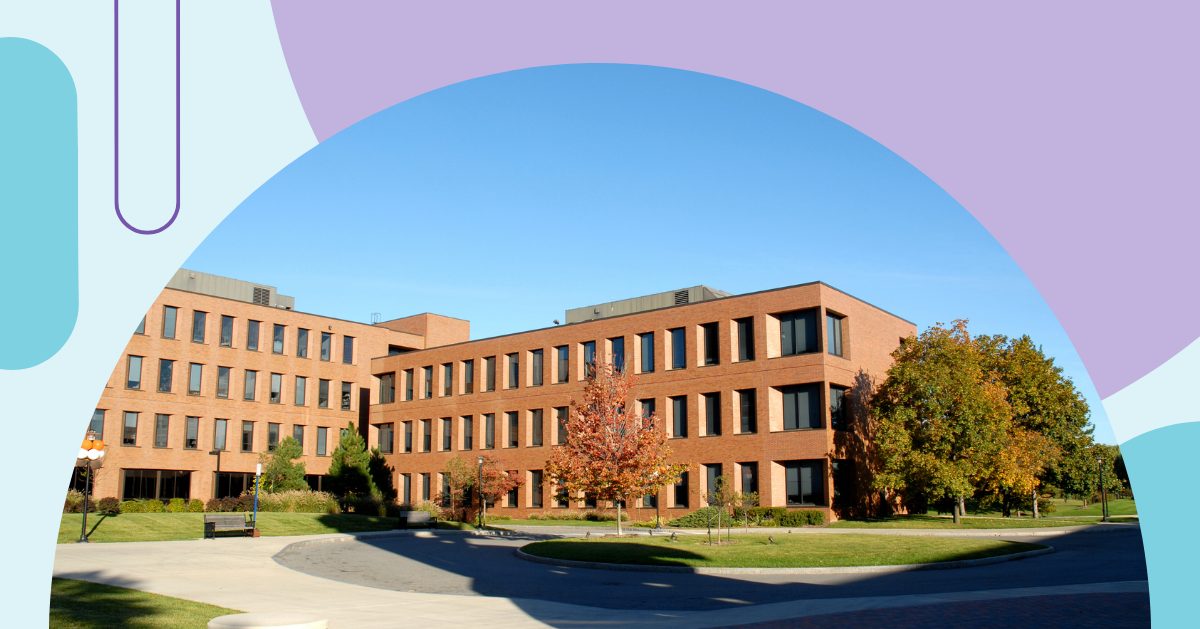
Student evaluations are one of the most abundant yet underutilized resources in higher education. This valuable data, including student evaluations of professor performance, helps guide institutional improvement efforts.
However, many institutions struggle to fully utilize student evaluation data, even though they collect thousands of feedback forms. Between low response rates, potential biases, and overwhelming amounts of information, valuable insights often get lost in the shuffle.
This guide explores practical strategies to help you unlock the full potential of your student evaluation data and drive real institutional improvement.
Why student evaluation data often falls short
Despite the prevalence of student evaluations in higher education, their insights are frequently underutilized. Common pitfalls preventing institutions from extracting maximum value from their evaluation efforts include:
- Low response rates: Most students do not complete evaluations, and the resulting data may not represent the full classroom experience. Small sample sizes can skew results and make identifying genuine patterns or concerns difficult.
- Bias in feedback: Research from Inside Higher Ed indicates how student evaluations of teaching can reflect unconscious biases related to gender, race, and teaching style rather than actual teaching effectiveness. Students may rate charismatic instructors higher, regardless of learning outcomes, or penalize demanding professors who maintain high standards.
- Lack of actionable follow-up: Perhaps most critically, many institutions collect student evaluation data without clear plans for using it. Forms pile up in digital archives while faculty receive minimal guidance on interpreting results or implementing changes. Without strategic approaches to analysis and action, even the best data remains merely interesting rather than transformative.
These challenges don’t mean evaluations lack value. Instead, they highlight the need for thoughtful, strategic approaches to maximize their impact on teaching quality and student success.
How to make the most of student evaluation data
Transforming raw evaluation data into meaningful improvements takes effort, but the payoffs for students and faculty are worth it. These seven tips can help your institution get the most out of your student assessments, from evaluations of professor performance to broader insights on curriculum and campus life.
1. Prioritize data quality over quantity
More data doesn’t automatically mean better insights. Instead of overwhelming students with lengthy surveys or collecting feedback on every possible aspect of a course, focus on gathering high-quality, relevant information that supports improvement goals.
Review your evaluation questions. Do they align with your institution’s teaching values and learning objectives? Replace generic satisfaction scales with specific questions about teaching practices, course design, and learning experiences.
For instance, rather than asking “Rate your instructor overall,” try “How effectively did your instructor explain complex concepts?” or “How well did course activities help you apply what you learned?” Well-designed course evaluation questions yield actionable feedback. They help faculty and department leaders understand what specific course elements support or hinder learning.
2. Address and mitigate bias in student feedback
Acknowledging bias in student evaluations doesn’t mean dismissing them entirely. Instead, it means developing strategies to recognize and minimize these influences while interpreting results with more consideration.
Research shows that student feedback can reflect biases based on instructor gender, race, age, and accent. Female instructors often receive harsher criticism about personality traits, while instructors of color may face unfair reviews of their expertise. Understanding these patterns helps institutions interpret data accurately.
Implement bias-reduction strategies such as providing students with context about unconscious bias before they complete the evaluation. Train faculty and administrators to recognize potential bias indicators when reviewing results.
Some institutions have found success with evaluation forms that focus on specific teaching behaviors rather than general impressions, which tends to reduce the impact of personal biases on ratings.
3. Increase response rates for more representative data
Low participation undermines the reliability of student evaluation data. When only highly motivated students — whether satisfied or dissatisfied — complete surveys, results do not reflect the typical student experience. Boosting response rates requires understanding why students do or don’t participate.
Timing matters. Schedule evaluations when students are engaged but not overwhelmed, avoiding finals week or immediately after major assignments. Many institutions find success with in-class completion time, which increases participation while ensuring students have dedicated time for thoughtful responses.
Communication is also vital. Help students understand how their feedback creates positive changes by sharing examples of previous improvements based on evaluation data. When students see that their input influences course design and teaching methods, they’re more likely to participate in future evaluations.
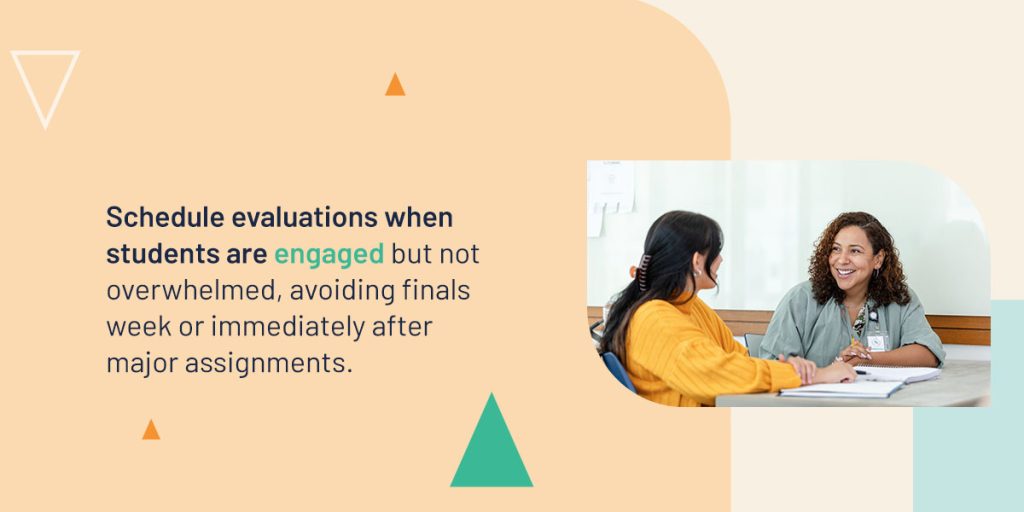
4. Contextualize evaluation data with multiple measures
Student evaluation of teaching provides a valuable perspective, but it shouldn’t stand alone. The most accurate picture of teaching effectiveness emerges when you combine student feedback with other assessment methods.
Incorporate peer observations, self-reflection exercises, and learning outcome data alongside student evaluations. For example, a professor’s evaluation with mixed student reviews for a challenging course, but strong exam performance and peer observations, could reveal effective teaching that pushes students beyond their comfort zones.
This multi-faceted approach helps identify patterns and contradictions that warrant deeper investigation. It also protects faculty from unfair evaluation based on a single data source while encouraging continuous improvement across all dimensions of teaching efficacy.
5. Close the feedback loop with faculty and students
Collecting student evaluation data without sharing results and actions breaks trust and reduces future participation. Faculty and students need to understand how their input contributes to positive changes.
For faculty, provide evaluation results alongside constructive support. Rather than delivering numerical ratings, offer interpretation guidance, professional development resources, and opportunities for collaborative problem-solving. Create forums where instructors can discuss evaluation results with peers and share strategies for addressing common challenges.
Students also deserve to know that their voices are heard. Share aggregated results and planned improvements through course websites, department newsletters, or classroom announcements. When students see concrete changes based on previous feedback, such as restructured assignments or new learning resources, they understand their evaluations have a real impact.
6. Turn insights into actionable improvements
The true value of student evaluations emerges when insights translate into concrete changes. This transformation requires systematic approaches to identify priorities, implement changes, and measure results.
Identify patterns across multiple courses or semesters. If several sections report confusion about assignment expectations, that signals a need for clearer communication strategies rather than individual faculty issues. Develop action plans that address root causes rather than symptoms.
Set measurable goals for improvement and track progress over time. This evidence-based approach ensures continuous refinement rather than one-time fixes.
7. Foster a culture of continuous improvement
Sustainable improvement of teaching quality requires embedding student evaluation of professor feedback into institutional culture rather than treating it as an isolated annual event.
Leadership must model this mindset. Administrators should discuss their evaluation results and improvement efforts, which normalizes the process of receiving and acting on feedback. Celebrate faculty who demonstrate growth based on student input, showcasing their journeys as examples rather than focusing on those who receive high ratings.
Create structures that support ongoing reflection and improvement. Regular teaching circles where faculty discuss evaluation results and share strategies can transform isolating feedback into collaborative growth opportunities. Additionally, institutions should establish mentorship programs that pair experienced instructors with those working to enhance specific aspects of their teaching based on evaluation data.
Unlocking the full potential of student evaluation data with Watermark
By approaching student evaluations with intention, institutions can tap in to a rich vein of actionable insights. Thoughtful survey design, bias mitigation, and broad participation generate high-quality data, while multi-metric context and transparent communication transform information into improvement.
Implementing these best practices at scale becomes simpler with the right tools and support. Watermark Course Evaluations & Surveys empower higher education institutions to gather quality feedback, surface key insights instantly, and leverage student evaluation data for ongoing optimization.
Request a demo to see how Watermark can help you unlock the full potential of student evaluations at your institution.
